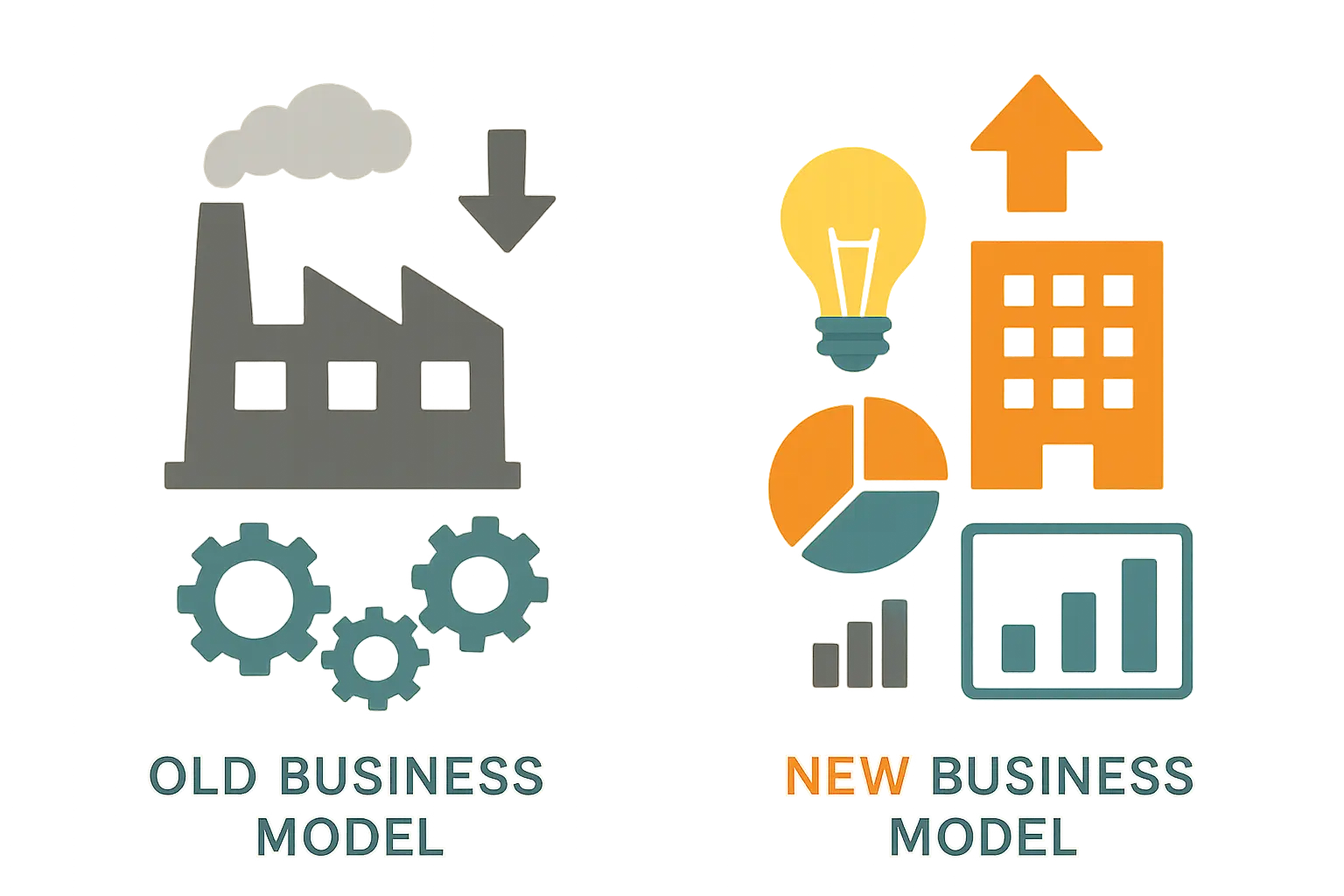So I was procrastinating on LinkedIn last Tuesday (don’t judge me) when I came across this stat that made me actually pause my mindless scrolling. According to research from Statistics by Jim, case studies are particularly valuable for deeply understanding a subject in its real-life context, revealing insights into the dynamics of situations and offering a ground for testing theories. That got me thinking about my own journey studying successful companies – I’ve spent way too many late nights analyzing what separates the winners from the companies that just… exist.
You know what’s wild? Most businesses fail not because they lack good ideas, but because they don’t learn from others who’ve already solved similar problems. It’s like trying to reinvent the wheel when there’s a perfectly good blueprint sitting right there. That’s where these case studies become absolute game-changers. They’re not just stories – they’re actual blueprints for success that you can steal (legally) and adapt.
Look, I’ll be honest – I’ve tried copying some of these strategies and face-planted spectacularly. But I’ve also had some wins that completely changed how I think about business. I’ve compiled 25 of the most impactful business case study examples that showcase everything from digital transformation wins to crisis management masterclasses. These aren’t theoretical concepts – they’re real companies with real results that you can study and (hopefully) not mess up like I did a few times.

Table of Contents
-
What Makes a Business Case Study Worth Your Time?
-
Digital Transformation & Technology Innovation (5 Examples)
-
Marketing & Customer Experience Innovation (5 Examples)
-
Business Model Innovation & Disruption (5 Examples)
-
Operational Excellence & Supply Chain Innovation (5 Examples)
-
Crisis Management & Business Resilience (5 Examples)
-
Deep Dive Analysis: Two Standout Examples
-
How to Evaluate Case Studies for Maximum Learning
-
Turning Case Study Insights Into Marketing Success
-
Final Thoughts
TL;DR
-
Choose case studies based on relevance, data quality, how messy and complicated the real situation was, and clear learning objectives
-
Digital transformation leaders like Microsoft and Adobe show the power of cultural shifts combined with technology adoption
-
Marketing innovators such as Dollar Shave Club and Airbnb prove that authentic storytelling beats big budgets
-
Business model disruptors like Netflix and Uber demonstrate how platform thinking can reshape entire industries
-
Operational excellence examples from Toyota and Amazon reveal that systematic approaches create sustainable competitive advantages
-
Crisis management case studies from J&J and Starbucks highlight the importance of transparency and swift action
-
The best case studies combine quantifiable results with clear strategies you can actually follow (not just admire from afar)
What Makes a Business Case Study Worth Your Time?
Not all case studies are created equal. I’ve wasted too many hours reading fluff pieces that sound impressive but offer zero actionable insights. My coffee got cold more times than I care to admit while reading case studies that were basically corporate fan fiction.
Relevance and Recency Matter More Than You Think
The business world moves stupidly fast. A case study from 2015 might seem recent, but it’s practically ancient history in digital terms. I prioritize studies from 2020-2025 because they capture current market realities – remote work chaos, supply chain nightmares, AI adoption, and consumers who change their minds faster than my teenager changes outfits.
Industry alignment is crucial too. You wouldn’t study a manufacturing case study if you’re running a SaaS company (unless there’s a specific operational insight that translates, which sometimes happens). Sure, you can learn from other industries, but honestly? The closer to your business, the better.
When evaluating case studies for your business, consider how market sizing guide business opportunity principles can help you assess whether the market conditions in the case study align with your current business environment.
|
Case Study Quality Factor |
High Quality Indicators |
Red Flags to Avoid |
|---|---|---|
|
Data Transparency |
Specific metrics (15% revenue growth), verified sources, third-party validation |
Vague terms (“significant growth”), unverified claims, no data sources |
|
Strategic Complexity |
Multi-dimensional challenges, failure acknowledgment, pivot strategies |
Simple success stories, one-dimensional solutions, no mentioned obstacles |
|
Implementation Details |
Step-by-step processes, timeline specifics, resource allocation |
High-level overviews, missing execution details, theoretical frameworks only |
|
Measurable Outcomes |
ROI percentages, customer metrics, market share data |
Qualitative benefits only, unmeasurable claims, industry awards as proof |
Data Quality Separates Winners from Wannabes
I get suspicious when case studies throw around vague terms like “significant growth” or “improved efficiency.” Like, what does that even mean? The best examples include specific metrics: revenue percentages, customer acquisition costs, retention rates, market share gains. Give me numbers I can actually verify.
Source credibility matters enormously. Academic institutions, verified company reports, and reputable business publications carry weight. Random blog posts with no citations? Hard pass. I actually called my friend who works at one of these companies to verify some numbers, and let me tell you, the real story was way messier than the polished case study suggested.
Strategic Complexity Reveals Real Learning
Simple success stories make for easy reading, but complex challenges teach you more. I look for case studies that address multiple business dimensions simultaneously – operations, marketing, finance, and technology all working together (or sometimes fighting each other).
The most valuable studies also address failures and pivots honestly. Companies that only share their wins are hiding the messy reality of business strategy. Trust me, I’ve been there.
Take Slack’s case study approach. Instead of just highlighting their rapid user growth, they transparently shared how they pivoted from a gaming company (Tiny Speck) to workplace communication, including the failures that led to their transformation. They detailed specific metrics: 15,000 daily active users at launch growing to 500,000 within one year, 93% customer retention rates, and $340M in annual recurring revenue by 2019. This is the kind of stuff you can actually use, not just admire from afar.
Digital Transformation & Technology Innovation

1. Microsoft’s Cloud-First Strategy (2014-2024)
I remember thinking Nadella was crazy when he first announced this strategy. Like, giving away Office to your competitors? But man, was I wrong about that one.
Microsoft’s transformation under Satya Nadella represents one of the most dramatic corporate pivots in business history. When Nadella took over in 2014, the company was hemorrhaging relevance in a mobile-first world, and honestly, most of us thought they were done for.
The numbers tell an incredible story. Revenue jumped from $86.8B in 2014 to $211.9B in 2023, with Azure going from basically nothing to making more money than most entire companies. We’re talking stupid money here – Azure became a $100B+ business. But the real transformation was cultural – shifting from a “know-it-all” to “learn-it-all” mindset.
What made this work? Nadella embraced partnerships with former competitors like Apple and Google. Microsoft Office became available on iOS and Android (which seemed insane at the time). The company invested massively in cloud infrastructure while maintaining its enterprise relationships.
2. Shopify’s Platform Ecosystem Expansion
This one took me three attempts to really understand because the strategy seemed so simple on the surface, but the execution was brilliant.
Shopify started as a simple e-commerce platform but evolved into a comprehensive commerce ecosystem. Their merchant base exploded from 175,000 in 2015 to over 1.7 million in 2023, with gross merchandise volume exceeding $197B.
The strategy was brilliant in its simplicity: build an extensive app marketplace, introduce Shopify Plus for enterprise clients, and expand into offline retail with POS systems. They created a platform where success breeds success – the more merchants succeed, the more Shopify grows. It’s like they figured out how to make money while their customers make money.
3. Zoom’s Pandemic Pivot and Scaling
Look, we all got Zoom fatigue, but you gotta respect what they pulled off technically. Few companies faced a challenge as dramatic as Zoom during COVID-19. Daily meeting participants jumped from 10 million in December 2019 to 300 million by April 2020. That’s 30x growth in four months. Going from 10 million to 300 million users without everything crashing? That’s not luck.
The technical achievement was remarkable, but the strategic response was even better. Zoom implemented security enhancements (remember “Zoombombing”?), diversified into Zoom Phone and Zoom Rooms, and maintained service quality during unprecedented demand. They turned a crisis into a competitive advantage.
4. Tesla’s Vertical Integration Model
Now, before you start rolling your eyes about another Elon love-fest, hear me out. I used to think Tesla was all hype too.
Tesla built end-to-end control over the electric vehicle ecosystem when everyone said it was impossible. They achieved 1.8 million vehicle deliveries in 2023 with 95%+ customer satisfaction rates, which is pretty wild for a car company.
The vertical integration strategy included in-house battery production, the Supercharger network, direct-to-consumer sales, and software-defined vehicles. Tesla proved that controlling your entire value chain can create unbeatable customer experiences. Though let’s be honest, their customer service can still be a nightmare.
5. Adobe’s Subscription Model Transformation
Adobe’s transition from perpetual software licenses to Creative Cloud subscriptions seemed risky at the time. Customers were absolutely furious about losing ownership of their software. I remember the internet revolt – people were genuinely angry.
But the results speak for themselves. Recurring revenue increased from $1.8B in 2012 to $15.8B in 2023, with 90%+ customer retention. Cloud-based delivery enabled continuous updates, integrated workflows, and AI-powered features that wouldn’t have been possible with the old model. Turns out, even angry customers will pay for convenience and constant improvements.
These case study examples demonstrate that successful digital transformation requires both technological innovation and cultural change, with companies that master both dimensions achieving sustainable competitive advantages.
Marketing & Customer Experience Innovation
6. Dollar Shave Club’s Viral Marketing Disruption
I must have watched that video like 20 times trying to figure out what made it work. My wife thought I’d lost it.
Dollar Shave Club’s launch video remains one of the best examples of viral marketing done right. They spent $4,500 on a 90-second video that gained 26 million views in two days. That’s like the entire population of Australia watching your dumb razor video. Insane. And it generated 26,000 customers in 48 hours.
The strategy attacked Gillette’s dominance through humor, transparent pricing, and subscription convenience. They identified a real customer pain point (expensive razors) and solved it with personality and direct-to-consumer delivery. Fun fact: I actually subscribed just to see if their razors were any good. Spoiler alert – they were fine, but the experience was what hooked me.
Unilever acquired them for $1B in 2016, proving that great marketing can build billion-dollar businesses faster than traditional approaches.

7. Airbnb’s Trust and Safety Revolution
Airbnb faced a fundamental challenge: convincing strangers to stay in each other’s homes. When you think about it, that’s a pretty crazy business model. They grew from 2 million nights booked in 2011 to over 1 billion guest arrivals in 2023.
The trust-building strategy included host verification, comprehensive guest reviews, insurance coverage, and 24/7 customer support. They created systems that made peer-to-peer accommodation feel safer than traditional hotels. Though let’s be real – we’ve all had that one Airbnb experience that made us question our life choices.
8. Spotify’s Personalization Algorithm
This genuinely made me rethink everything I thought I knew about recommendation engines. Spotify’s recommendation engine transformed how people discover music. With 515 million monthly active users and 210 million premium subscribers in 2023, their personalization strategy drives 30% higher user engagement.
Discover Weekly, Daily Mix playlists, and AI-driven recommendations create unique experiences for each user. The algorithm learns from listening patterns, skip rates, and playlist additions to serve increasingly relevant content. It’s scary how well it knows my music taste – sometimes better than I do.
9. Glossier’s Community-Driven Brand Building
Glossier built a $100M+ beauty brand with 90% of customers acquired through word-of-mouth. Their Instagram-first approach turned customers into brand ambassadors, which sounds simple but is incredibly hard to execute.
The community-driven strategy included user-generated content, product development based on customer feedback, and authentic social media engagement. They proved that building genuine relationships beats traditional advertising. Though your mileage may vary – this approach requires serious commitment to community management.
Understanding how to generate engaging content ideas is crucial for replicating Glossier’s success, which is why learning how to come up with blog topics that resonate with your community can be a game-changer for community-driven marketing strategies.
10. Peloton’s Connected Fitness Ecosystem
Peloton created an immersive home fitness experience combining hardware, software, and content. At their peak, they reached 2.9 million connected fitness subscribers with a 92% retention rate, which is pretty impressive for fitness equipment that usually becomes expensive clothes hangers.
The ecosystem strategy included high-quality hardware, live and on-demand classes, community features, and instructor personality branding. They made home workouts feel like boutique fitness experiences. Of course, they also showed us what happens when your entire business model depends on people staying home.
Consider how Nike implemented a similar community-driven approach with their Nike Training Club app. They offered free premium workouts during COVID-19, growing their digital community from 20 million to 45 million users. Instead of pushing product sales immediately, they focused on value delivery through expert training content, building trust that eventually translated to a 35% increase in digital sales and stronger customer lifetime value across their ecosystem.
This case study example shows how community-first marketing strategies can create lasting competitive advantages when executed with authentic value delivery.
Business Model Innovation & Disruption
11. Uber’s Platform Economy Model
Uber created a two-sided marketplace connecting drivers and riders across 70+ countries with 131 million monthly active users in 2023. Their platform model revolutionized transportation and inspired countless imitators (some successful, many not so much).
The strategy included dynamic pricing (which everyone loves to hate), driver incentives, expansion into food delivery and freight, and autonomous vehicle investment. They proved that asset-light models could scale faster than traditional businesses. Though let’s be honest, the whole “gig economy” thing is still pretty controversial.
12. Netflix’s Content Strategy Evolution
Okay, so you know how everyone always talks about Netflix? Well, here’s what they don’t tell you about their transformation from DVD rental to streaming to original content production. With 260 million global subscribers and $31.6B revenue in 2023, they spend $17B annually on content. That’s more than some countries’ entire GDP.
The evolution strategy included data-driven content creation, global expansion, binge-watching models, and algorithm-driven recommendations. They changed how the world consumes entertainment. I’ll admit, I was pretty skeptical when they started making their own shows, but House of Cards proved me wrong.

|
Business Model Type |
Key Success Factors |
Revenue Streams |
Scalability Advantages |
|---|---|---|---|
|
Platform Economy |
Network effects, data insights, ecosystem partnerships |
Transaction fees, subscription tiers, advertising |
Exponential growth potential, global expansion, asset-light scaling |
|
Subscription Model |
Customer retention, continuous value delivery, predictable revenue |
Monthly/annual subscriptions, tiered pricing, add-on services |
Recurring revenue, customer lifetime value optimization, cash flow predictability |
|
Marketplace Model |
Trust mechanisms, supply-demand balance, quality control |
Commission fees, listing fees, premium services |
Two-sided growth, reduced inventory costs, community-driven scaling |
|
Direct-to-Consumer |
Brand control, customer data ownership, supply chain efficiency |
Product sales, subscription boxes, exclusive offerings |
Higher margins, customer relationship control, rapid market testing |
13. Amazon’s Marketplace Expansion
Amazon built the world’s largest e-commerce marketplace while maintaining direct retail operations. Third-party sellers account for 60% of Amazon’s retail sales, with over 2 million active sellers. Basically, they turned their competitors into customers, which is pretty genius when you think about it.
The marketplace strategy included Fulfillment by Amazon (FBA), Amazon Prime ecosystem integration, and AWS cross-subsidization. They created a platform where competitors become customers. Your results will probably vary, but the principle here is solid.
14. Square’s Small Business Ecosystem
Square democratized payment processing for small businesses and expanded into comprehensive business services. They processed $200B+ in gross payment volume in 2023 with 4 million seller locations.
The ecosystem strategy included simple pricing, integrated POS systems, business loans, payroll services, and the Cash App consumer platform. They became the operating system for small businesses. This worked for them, but your situation might be totally different if you’re not starting with payments.
15. Warby Parker’s Direct-to-Consumer Eyewear
Warby Parker disrupted the eyewear industry through online-first sales and transparent pricing. Valued at $3B+ with 145 retail locations, they proved direct-to-consumer could work for traditionally in-person purchases.
The disruption strategy included home try-on programs, social impact missions, data-driven inventory, and gradual retail expansion. They made buying glasses convenient and affordable. Though I still prefer trying glasses on in person – call me old-fashioned.
These case study examples illustrate how innovative business models can disrupt entire industries by reimagining value creation and delivery mechanisms.
Operational Excellence & Supply Chain Innovation
16. Zara’s Fast Fashion Supply Chain
This next one is going to sound boring, but stick with me. Zara revolutionized fashion retail by bringing new designs to stores in 2-3 weeks versus the industry average of 6 months. Their speed creates artificial scarcity that drives purchasing decisions (and probably contributes to fast fashion problems, but that’s another discussion).
The supply chain strategy included vertical integration, local sourcing for speed, limited quantities, and real-time market feedback. They turned fashion into a data-driven business.

17. Amazon’s Logistics and Fulfillment Network
Amazon built the world’s most sophisticated e-commerce logistics system with over 1,000 fulfillment centers worldwide, delivering to 185+ countries with same-day and next-day options. The scale is honestly mind-boggling.
The logistics strategy included automated warehouses, predictive inventory placement, drone delivery pilots, and logistics-as-a-service for third parties. They made fast delivery the new standard, which is great until you order something at 11 PM and expect it the next morning.
18. Toyota’s Lean Manufacturing System
I used to think this was complete BS until I saw the numbers. Toyota’s continuous improvement methodology became the industry standard. They consistently rank #1 in reliability with 95%+ customer satisfaction and minimal waste production.
The lean strategy included just-in-time production, kaizen improvement culture, supplier partnership models, and quality-first approaches. They proved that efficiency and quality aren’t mutually exclusive.
19. Walmart’s Supply Chain Optimization
Walmart leverages scale and technology for cost leadership in retail. With $611B revenue in 2023, they maintain industry-leading inventory turnover and cost efficiency. The numbers are staggering.
The optimization strategy included cross-docking distribution, vendor partnerships, RFID tracking, and omnichannel inventory management. They made low prices sustainable through operational excellence.
20. FedEx’s Hub-and-Spoke Model
FedEx revolutionized package delivery through centralized sorting and routing. They deliver 16+ million packages daily with 99%+ on-time performance, which is pretty impressive when you think about all the things that could go wrong.
The hub-and-spoke strategy included the Memphis superhub, overnight delivery guarantees, package tracking technology, and global network expansion. They made impossible delivery promises routine.
Look at how McDonald’s applied similar operational excellence principles to fast food. They standardized cooking processes, optimized kitchen layouts for speed, and created supply chain partnerships that ensure consistent quality across 40,000+ locations worldwide. Their “Speedee Service System” reduced order fulfillment time from 30 minutes to 30 seconds, achieving 99.2% order accuracy while serving 70 million customers daily. This systematic approach to operations created a replicable business model that scaled globally.
This case study example demonstrates how operational excellence can become a sustainable competitive advantage when embedded into company culture and processes.
Crisis Management & Business Resilience
21. Johnson & Johnson’s Tylenol Crisis Response (1982 & Modern Applications)
I actually lived through the Tylenol thing as a kid. My mom threw out every bottle in the house. That’s the kind of fear J&J was dealing with.
J&J’s response to the Tylenol poisoning crisis remains the gold standard for crisis management. They regained 100% market share within one year despite initially losing 37% market share.
The crisis strategy included immediate product recall, transparent communication, tamper-proof packaging innovation, and customer safety prioritization. They chose long-term trust over short-term profits, which seems obvious now but was revolutionary then.
22. Starbucks’ Racial Bias Training Initiative
The Starbucks thing happened right when I was traveling a lot for work. Seeing those closed stores everywhere was surreal.
Starbucks’ response to a racial discrimination incident in Philadelphia showed how companies can turn crises into positive change. They closed 8,000 stores for one day to train 175,000 employees.
The response strategy included immediate accountability, comprehensive training programs, policy reforms, and ongoing diversity initiatives. They demonstrated that values matter more than profits, at least sometimes.

23. Zoom’s Security and Privacy Overhaul (2020)
Zoom’s rapid response to “Zoombombing” and privacy concerns during pandemic growth showed crisis management in real-time. They implemented a 90-day security plan while maintaining user growth, which is harder than it sounds.
The security strategy included feature freezes for security focus, end-to-end encryption, waiting rooms, and transparent communication. They turned a potential disaster into competitive advantage.
24. Domino’s Pizza Turnaround Strategy (2009-2015)
Domino’s complete brand transformation from “worst pizza” to market leader represents one of business history’s greatest turnarounds. Stock price increased 2,000%+ from 2009-2015. That’s not a typo.
The turnaround strategy included recipe reformulation, transparent marketing campaigns, digital ordering innovation, and operational improvements. They admitted failure and rebuilt from scratch. Sometimes brutal honesty works.
25. Target’s Data Breach Recovery (2013-2015)
Target’s recovery from a massive payment card data breach showed how companies can rebuild customer trust. They recovered customer confidence within 18 months while implementing industry-leading security measures.
The recovery strategy included executive accountability, comprehensive security overhauls, customer compensation, and transparent communication. They turned a security failure into a competitive advantage.
|
Crisis Type |
Response Timeline |
Key Success Factors |
Long-term Impact Metrics |
|---|---|---|---|
|
Product Safety Crisis |
Immediate (24-48 hours) |
Product recall, transparent communication, safety innovation |
Market share recovery, brand trust scores, regulatory compliance |
|
Security Breach |
Rapid (1-2 weeks) |
System overhaul, customer compensation, transparency |
Customer retention rates, security certifications, competitive advantage |
|
Brand Reputation Crisis |
Swift (1-7 days) |
Accountability, systemic changes, values demonstration |
Employee satisfaction, customer loyalty, stakeholder confidence |
|
Operational Failure |
Comprehensive (3-6 months) |
Process redesign, quality improvement, honest marketing |
Revenue recovery, operational efficiency, market position |
Deep Dive Analysis: Two Standout Examples
The Complex Transformation: Microsoft’s Cloud-First Strategy
Microsoft’s transformation deserves deeper analysis because it demonstrates how established companies can reinvent themselves completely. When Satya Nadella became CEO in 2014, Microsoft faced existential threats on multiple fronts, and honestly, most of us thought they were toast.
The challenge was multifaceted: declining PC sales, mobile market irrelevance, Amazon AWS dominating cloud services, and developers abandoning Microsoft technologies. The company’s entire business model was under attack. I actually tried to short Microsoft stock in 2015 because I thought they were done for. Thank God I chickened out.

Nadella’s strategy implementation was masterful:
Cultural Transformation: The shift from “know-it-all” to “learn-it-all” wasn’t just corporate speak. It changed how Microsoft approached partnerships, product development, and customer relationships.
Platform Openness: Making Office available on iOS and Android seemed like surrender, but it actually expanded Microsoft’s addressable market exponentially.
Partnership Strategy: Collaborating with former competitors like Apple and Google required swallowing enormous pride but created new revenue streams.
Cloud Investment: Massive infrastructure spending on Azure data centers was a bet-the-company decision that paid off.
Subscription Model: Moving Office to Office 365 subscription created predictable recurring revenue while enabling continuous innovation.
The results speak volumes: market capitalization grew from $300B to $3T+, Azure became the second-largest cloud platform, Office 365 achieved 400M+ subscribers, and developer satisfaction scores increased 40%.
Microsoft’s success with advanced analytics mirrors the principles outlined in our guide on advanced analytics strategic growth, showing how data-driven decision making can transform entire business models.
The Simple Disruption: Dollar Shave Club’s Launch Strategy
Dollar Shave Club’s success story proves that brilliant execution can beat massive budgets. Gillette dominated 70% of the razor market with high prices and unnecessarily complex product lines. It was basically a monopoly.
The solution was elegantly simple: direct-to-consumer subscription model, transparent pricing ($1, $6, $9 monthly plans), viral marketing addressing customer pain points, and convenient delivery.
The execution was flawless. That 90-second YouTube video cost $4,500 to produce but gained 26M views and generated 26,000 customers in 48 hours. The message resonated because it addressed real frustration with overpriced razors.
The outcome validated the strategy: Unilever acquired them for $1B within five years, forcing the entire industry to reconsider pricing strategies.
How to Evaluate Case Studies for Maximum Learning
Relevance and Recency Assessment
I categorize case studies into three relevance tiers. High relevance (2020-2025) includes examples like Zoom’s pandemic scaling, Tesla’s vertical integration, Microsoft’s cloud transformation, and Target’s security recovery. These capture current market dynamics and technological capabilities.
Moderate relevance (2015-2020) covers Netflix’s content strategy, Amazon’s marketplace expansion, and Spotify’s personalization. These remain applicable but require context adjustments for current conditions.
Historical but timeless examples include Toyota’s lean manufacturing, J&
Historical but timeless examples include Toyota’s lean manufacturing, J&J’s Tylenol crisis, and FedEx’s hub-and-spoke model. The principles remain valid even if the specific tactics need updating.

Data Quality and Transparency Standards
Excellent documentation comes from companies like Microsoft (public financial reports, leadership interviews), Amazon (SEC filings, AWS growth metrics), and Netflix (subscriber data, content investment figures). These provide verifiable metrics and clear methodologies.
Good documentation includes Tesla (delivery reports, customer satisfaction surveys) and Starbucks (training program metrics, policy changes). The data exists but requires more interpretation.
Limited but sufficient documentation covers Dollar Shave Club (acquisition price, customer growth) and Warby Parker (valuation, store count). The core metrics are available even if the details are sparse.
When analyzing case study data quality, consider using tools like those reviewed in our comprehensive SEO content tools review to verify metrics and sources for accuracy and credibility.
Strategic Complexity Evaluation
High complexity transformations like Microsoft’s cloud pivot, Amazon’s marketplace ecosystem, and Netflix’s content strategy address multiple business dimensions simultaneously. These teach comprehensive strategic thinking.
Medium complexity innovations such as Tesla’s vertical integration, Spotify’s personalization, and Zara’s supply chain focus on specific competitive advantages. These demonstrate focused execution excellence.
Lower complexity disruptions including Dollar Shave Club’s marketing, Warby Parker’s direct-to-consumer approach, and Glossier’s community building show how single-point innovations can create massive value.
Turning Case Study Insights Into Marketing Success
The business case study examples I’ve shared demonstrate one critical truth: success comes from data-driven strategies, not guesswork. At The Marketing Agency, we recognize that studying these cases provides value, but implementing similar strategies requires the right expertise and systematic approach.

Translating Case Study Insights into Marketing Success
Many successful companies share common marketing principles that we specialize in implementing:
Data-Driven Decision Making: Netflix uses viewing data to create content, Spotify uses listening patterns for recommendations. We integrate AI-driven analytics into every campaign, analyzing your marketing data in real-time and making adjustments that maximize ROI while minimizing guesswork.
Omnichannel Integration: Companies like Amazon and Target succeed through seamless customer experiences across all touchpoints. Our approach combines SEO for long-term growth, PPC for immediate traction, email marketing for customer retention, and inbound marketing for complete buyer journey oversight.
Transparent, Performance-Focused Approach: The most successful case studies feature companies prioritizing measurable outcomes over vanity metrics. We share insights that drive growth, conversions, and brand visibility, not just impressive-looking numbers.
Understanding marketing ROI is crucial for implementing case study insights effectively, which is why we recommend using our marketing ROI calculator to measure the impact of strategies inspired by these successful business transformations.
Learning from Digital Transformation Leaders
Case studies show that companies like Microsoft, Adobe, and Shopify succeeded by embracing new technologies while maintaining strategic focus. We combine human creativity with machine intelligence through LLM optimization, predictive analytics, and automated campaign optimization.
Whether you’re inspired by Dollar Shave Club’s viral marketing, Airbnb’s trust-building approach, or Tesla’s customer-centric innovation, we help you adapt these strategies to your specific market and goals.
For businesses looking to leverage AI in their transformation journey, our insights on creating continuously learning systems AI can help you implement the kind of adaptive strategies that made companies like Netflix and Spotify industry leaders.
Ready to transform case study insights into measurable marketing results? The companies featured in these examples succeeded through strategic execution and data-driven decision making – exactly what we help you implement.
Final Thoughts
Look, here’s the deal – these 25 business case study examples represent more than just success stories. They’re proof that systematic thinking and strategic execution can overcome seemingly impossible challenges. From Microsoft’s complete cultural transformation to Dollar Shave Club’s viral disruption, each example demonstrates specific principles you can steal (legally) and adapt to your own business.
The patterns are clear: companies that succeed combine data-driven decision making with authentic customer focus, embrace technological change while maintaining strategic clarity, and view crises as opportunities for competitive advantage. Whether you’re facing digital transformation challenges, seeking marketing innovation, or building operational excellence, these case studies provide tested frameworks for success.
What matters most isn’t just reading these examples – it’s implementing the insights systematically. The companies that created these case studies didn’t succeed because they were lucky or because they had some secret sauce. They succeeded because they paid attention, adapted when they had to, and weren’t afraid to look stupid while they figured things out.
The real question isn’t whether these strategies work (they obviously do), but whether you’re willing to put in the work to adapt them to your situation. Because let’s be honest – reading case studies is easy. Actually implementing this stuff? That’s where it gets interesting.



